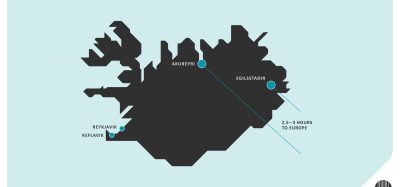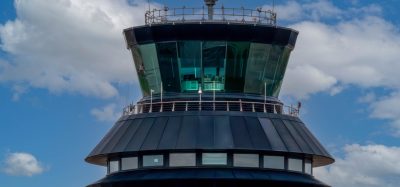Bird strike prevention – SMS challenge and a green signal
Posted: 31 July 2007 | Luit Buurma, Honorary Chairman International Bird Strike Committee | No comments yet
Bird strike prevention is a splendid subject for the appreciation of an airport’s Safety Management System and even indicative for the maturity of its business plan. Airports are open systems by nature and by culture. Birds are free to migrate around the globe but are constrained in their possibilities to stopover at the airport and its periphery. Just as all other habitats, the airport landscape tends to have a settled bird population and access for newcomers is regulated by behavioural rules; just like landing airplanes when guided in by air traffic control. The capacities of ecosystems and airports provide keys for the management to control natural and human risk factors. Bird strikes may escalate dramatically where these two factors interfere unforeseen. Technologies to monitor and predict risks and to support decision making are developing fast.
Bird strike prevention is a splendid subject for the appreciation of an airport’s Safety Management System and even indicative for the maturity of its business plan. Airports are open systems by nature and by culture. Birds are free to migrate around the globe but are constrained in their possibilities to stopover at the airport and its periphery. Just as all other habitats, the airport landscape tends to have a settled bird population and access for newcomers is regulated by behavioural rules; just like landing airplanes when guided in by air traffic control. The capacities of ecosystems and airports provide keys for the management to control natural and human risk factors. Bird strikes may escalate dramatically where these two factors interfere unforeseen. Technologies to monitor and predict risks and to support decision making are developing fast.
The vast majority of potentially risky bird strikes occur where near misses and non damaging hits, leaving a clearly visible blood smear, blend into one another. Close radar and visual examination shows that many birds succeed in evasive manoeuvring out of the aircraft’s flight path. At the other end of the spectrum there are serious and costly incidents and even fatal accidents due to collisions. Quantifying the bird strike rate as a measure to assess the bird control programme is quite difficult. Full ‘blood smear monitoring’ is usually only performed in an extremely disciplined military or (preferably) scientific context. However, by keeping track of the reporting standard and conditions, bird strike statistics can reveal a lot of valuable information for bird control. Not every airport is willing to look out for and register every blood smear and to sample it for microscopic or DNA analysis. But the cost of this measure is decreasing quickly, while the profit of acquiring the resulting knowledge in combination with routine assessment of the local bird population increases. In fact, ICAO standards (Annex 14) already made routine reporting a national responsibility. EU directive 2003/42 included bird strike incidents in the mandatory occurrence reporting. The wish to avoid liability claims does the rest.
Nowadays, it is common practice to have almost full control over the local airport bird population. A long history of trial and error has resulted in a well developed market of scaring equipment, service providers and qualified evaluators. Through endorsement by the International Bird Strike Committee, the initial set of certification criteria have evolved. Several major aerodromes anticipated this by benchmarking their bird strike prevention programmes.
Join us live: Shaping the Next Generation of Hold Baggage and Air Cargo Screening
Join us live for an insightful webinar on 11th December at 14:00 GMT, in collaboration with Smiths Detection, as we explore the strategic balance of operational efficiency, regulatory compliance, and sustainability in high-volume security environments.
This session offers a focused look into future-proofing your security strategy.
Key learning points
- Cost Reduction: Strategies to minimize bag travel time while simultaneously reducing operational costs.
- Regulatory Roadmap: Insights into the next wave of regulatory changes and their impact on future investment decisions.
- Sustainable Systems: Practical approaches to building sustainability into security systems and lowering the total cost of ownership (TCO).
- Scalable Solutions: Real-world examples of scalable systems supporting current airport growth and preparing for tomorrow.
Register now for expert insights, case studies, and actionable strategies on operational efficiency!
The state of the art program for bird strike prevention includes a certain control, as far as is practical, over the bird movements crossing the aircraft flight paths and also outside the fence of the airfield. These movements may result from local commuters, migratory birds or a mix of the two. Local commuters, like gulls flying every day between roosts and feeding grounds, are the first priority as they often fly in dense flocks and in a very predictable manner. Less predictable and often at much higher flight levels are short, medium and long distance (up to intercontinental) bird migrations. Even this last category is “under control” to a certain extent, thanks to the use of different types of radar.
“Under control” as yet may sound futuristic. However, developments proceed fast. The European Space Agency is now investigating the possibility of providing a continent wide or even worldwide “Avian Alert” service through the internet. By using earth observation techniques and satellite tracking of birds in combination with ground based systems they intend to provide bird migration information for flight safety and health (e.g. bird flu). Besides being a public service, this new programme is also an enormous scientific challenge and possibly a contribution to the understanding of ecosystem vulnerability and plasticity in relation to climate change.
Knowing that the birds are on the move is important for bird control units at airports. A sudden nocturnal mass arrival of Lapwings from England in spring, on Amsterdam Airport Schiphol, is a recurring phenomenon. Predictions of such arrivals constitute a nice example of vital information for an adequate scaring response. A sophisticated next step is a decision support system (DSS) on board a bird control vehicle. Many airports already process bird counts using portable computers while driving over the airport and even communicate these with ATC. Merging local bird data, logging the scaring effects with modelling and monitoring bird movements from outside the airfield into a DSS will safeguard and enhance personal experience. Even more important: also less experienced platform personnel can be incorporated into the control programme.
For the near future commuting birds within the airport vicinity will be the major focus of research and day to day operations. Local feeding and roosting flights of geese, ducks, cormorants, gulls, herons, other wetland birds and also crows and starlings, constitute a significant risk to aircraft when taking off or landing. These critical flight phases, as well as the speeds of the aircraft, make this category of bird strikes a new priority but almost non-accessible to the bird control units right now. This undesirable situation may change when mobile bird radars enter the market. Technically speaking, 3-D bird detection at low level, irrespective of ground and sea clutter, is feasible. The FAA is already pushing the promotion of this type of radar application. However, biological and operational constraints make it impossible to favour any of the products that are on the market today. Let us consider both constraints.
Biological knowledge is a profoundly limiting factor in bird control. Birds show a great diversity in response to scaring actions. Consequently, it is as yet impossible to implement automatic scaring equipment on the basis of radar monitoring of bird flight. Some bird controllers developed an amazing capacity to predict and anticipate bird appearance and behaviour. This skill is largely intuitive, but always based on a perfect knowledge of the bird species involved, often including awareness of individual peculiarities. So far, bird radars are not yet able to seriously identify species and therefore cannot be applied under operational conditions without human interpretation and oversight. Nevertheless, simple, small on-board radars might be used in the bird control vehicle to drastically expand the observation scope of the bird controller. As long as dedicated systems have not been designed properly there is no reason to prefer a research bird radar of say $250.000, over a COTS ship radar of $10.000.
The difficulty to quantify and qualify in three dimensions the bird flights across the airport control zone also results in operational constraints. Theoretically, the quantification problem is solved. Technically speaking it is a matter of investments and defining the calibration and classification criteria. But, no air traffic control organisation seems willing to support the development of fixed bird radars or other new features on airport surveillance radars to monitor bird movements. The easy argument is that they are not able to communicate with the birds. The unspoken argument is of course that ATC fears an overload of undefined responsibilities, especially at busy major aerodromes. A realistic argument is that predicting the flight behaviour of the birds automatically is impossible without knowledge of the identity, origin and destination of the bird echoes.
From the perspective of neighbouring nature conservationists, bird avoidance measures are the obvious favourite. They will argue that massive killing of the birds will not help 1) because the open spaces will be filled in by inexperienced and therefore dangerous newcomers and 2) flock members not shot will behave unpredictably and therefore increase the bird strike risks. After all, they will argue 3) that most bird species are protected for environmental reasons implying our long term safety. This impasse can only be solved by research increasing the understanding of the bird community and thus the predictability of its movements. The cooperation between airport managers and conservation leaders must result in agreeing on a zone of overlapping interest in space and time. With respect to space: towards the runways and overshoot area safety reasons may prevail and even legitimate population reduction, while towards the periphery the same knowledge will improve nature and habitat management. Improving habitat quality does not necessarily imply raising bird numbers, as excessive bird numbers might indicate unbalanced landscape ecology. Obvious examples are birds as pests due to uncovered garbage dumps and over-fertilized agricultural lands.
An extensive understanding of bird life and bird problems in and around airports and in particular the bird’s flight strategies, will mitigate a “can do” mentality. Occasionally, quick and dirty measures may still be necessary, but when not followed by a closer look, these measures will not increase the overall understanding and therefore not contribute to sustainable safety. Safety management systems, as now propagated by ICAO, include modelling and occurrence reporting in such a manner that long term prevention is favoured over the occasional necessity of acute, but short term measures. The best green signal the aviation world can provide society with, is a substantial contribution from the industry to the knowledge of the natural connectivity, i.e. the world of our feathered friends.
Luit Buurma
The author is the former chairman of the International Bird Strike Committee and at present chairman of the Bird Strike Fund. BSF focuses on creating a bridge between aviation and the world wide bird conservation community and to support the network function of IBSC. He thanks Lt Col Jan Paul Apon, John Davidson and Albert de Hoon for valuable discussions. The text expresses his personal views. For contacts mail to [email protected]
The International Airport Summit is open for registration!
Date: 19 – 20 November 2025
Location: JW Marriott Hotel Berlin
At our flagship event of the year, we will dive into the future of airport operations, with expert-led sessions on passenger experience, innovative smart technologies, baggage handling, airside operations, data, security, and sustainability.
This is where global airport leaders come together to share insights, challenges, and real-world solutions.
Limited complimentary passes are available for eligible professionals – first come, first served!

















